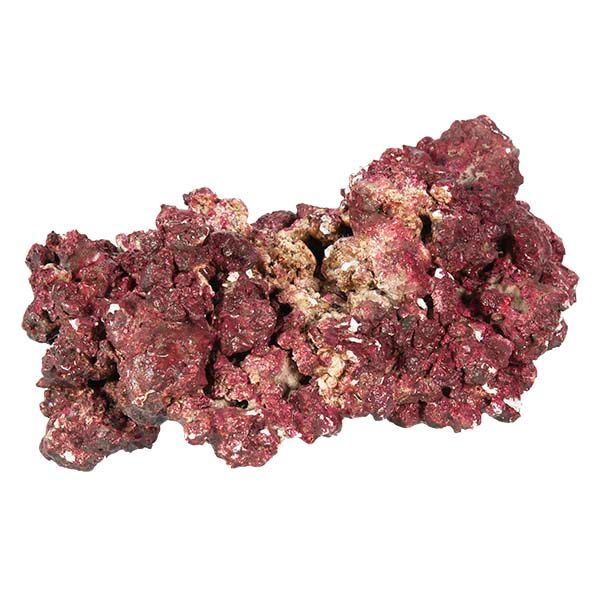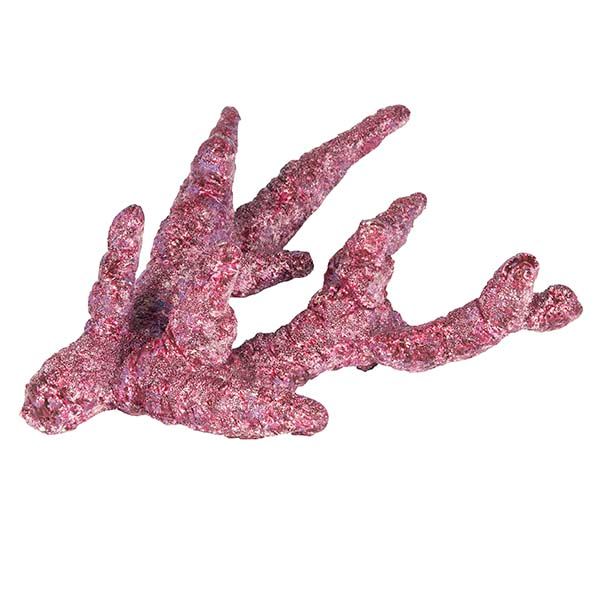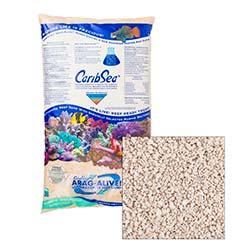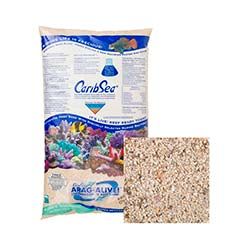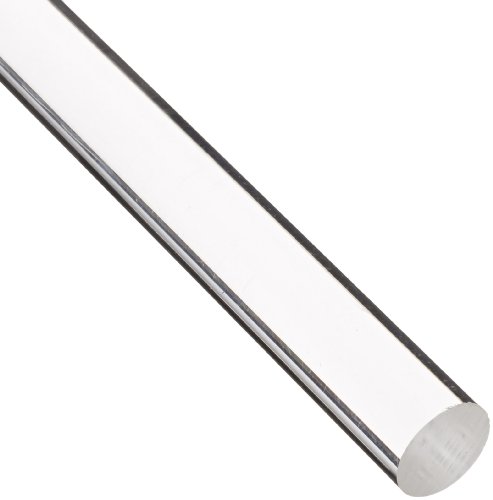So you want to Aquascape but don’t know where to start or what it entails. Well, you came to the right place.
When I was a kid, few places could completely immerse me into another world like the ocean. I loved the ocean from the smallest plankton to the largest whale. I enjoyed the immensity and mystery. Maybe that is why I tend to feel so attached to the brilliant blues, reds, and other ultraviolet colors of the coral and rock that can be seen in aquariums.
A well-tended aquarium captures the allure and mystery of the ocean scene it is trying to encapsulate aquarium can become a slice of life of what it is like at the bottom of the ocean or in a reed community.
Aquascaping can be an artist’s beautiful recreation of oceanic serenity and it turns out anyone can really do it. I am here to help guide you in your first steps on the path to curating your reef tank.
Reef Aquarium- Things to Consider
How does one capture that perfect scene of serenity? One ingredient at a time, of course.
Aquascaping is essentially designing the environment and it is imperative to know the different ingredients and the value of each environmental addition.
Live rocks are rocks that have organisms already inhabiting them. What this does is help to enhance the health of your reef tank if bought from a reputable seller.
The danger here is that sometimes live rocks can hide organisms that are actually bad for the inhabitants of your reef tank.
To learn more about live rocks please visit Reef Tank Resource’s live rock article to get a more complete picture of the benefits and potential dangers of live rock and how to avoid introducing harmful organisms to your tank.
Dry rocks have no organisms living on them so the risk of a harmful organism is eliminated however you will miss out on good invertebrates that could benefit your tank right away.
Either choice is valid in helping to structure your tank. Selecting your rocks means choosing more than just the visual appeal of the rock.
You need to consider size, shape, type, as well as the color palette you are aiming for. The size and shape are important to keep in mind because, when you begin to build the foundation of your reef tank, you will want rocks that are flat enough and big enough to act as a base for other rocks and coral.
The longevity of a structure depends on the foundation that you lay down.
Do not overlook the basics when aquascaping. Aquascaping requires that you have an eye for design that enhances the health of reef organisms.
How to Aquascape with Live Rock
You have decided to aquascape with live rock. There are a few things to consider as you begin to gather your supplies and create the mental notes needed for the initial foundation of your aquarium.
Since live rock introduces new organisms into your aquarium’s environment, it is important to keep in mind how much of it you are using. After all, you can’t expect the inhabitants of those rocks to simply stay put. They will want to explore the rest of the tank and an overabundance of these organisms will create issues with the overall health of your tank.
With live rocks, you are aiming to create structures with these rocks that are both stable and are friendly for the fish inhabitants that yearn for them. Remember to keep structures open enough for flow and allows for the possibility for later maintenance like removal of detritus.
Detritus can collect at the bottoms of rocks. To best care for your reef aquarium, you want to design the tank so that you can better clean it later. You want to avoid creating spaces that make it difficult to clean because of the close proximity of coral and rock.
How to Care for Live Rocks
You are moving ahead and deciding that live rocks are the path that you want to pursue. You better keep these things in mind to ensure that your live rocks are safe and ready to be added to your reef aquarium.
- Keep in mind who you are buying your rocks from. How is the rock being transported? Ideally, your rocks should be shipped overnight. However, this might not always be the case.
- Give your rocks a complete inspection. Are there potential harmful pests like fireworms? Does the rock just smell different from what you are used to?
- If you feel like your rock is okay feel free to rinse it in saltwater. The rinsing helps to remove any dead organisms.
- After introducing the live rock to your tank’s ecosystem make sure that you watch it for white or black formations. If this occurs, it means there are dying organisms on the rock.
How to Attach Live Rock
Obviously, you will want to create structures that look impressive to more than just your fish but your friends, too. You can try to create an arch with your rocks for a more dynamic and exciting structural piece but how do you do it? For something like this, it is better to begin the construction outside of the fish tank then carefully begin to bring the rock together. Here are several tips for attaching your rocks to one another but here are some of the most common choices people make.
- Drill and zip ties – drilling holes into the rocks and then zip tying the rocks together is a fast and reliable way of attaching the rocks together. Plus, if you ever wanted to take the rocks apart in the future, the zip ties are easy enough to snip off. I would recommend getting zip ties that are close to the color of rock that they will be tied together. A similar color will help to hide the ties a little better.
- Epoxy – Epoxy is easy to use and is as simple as gluing two rocks together, waiting for the epoxy to dry, and carefully placing the finished construction in your tank. Epoxy is easy to find at a local pet store but tends to be a little pricy.
- Gravity – You do not necessarily need to attach your rocks. If you are looking for a simpler aquascape, you will be able to support the rocks with one another. You will need to be careful that the rocks are stable enough from the foundation all the way to the top of the structure though.
- Other options include acrylic rods or foam instead of zip ties. It all depends on preference and the final product that you are looking for.
Aquarium Ideas
Aquascaping is all about creative freedom. As long as you are ensuring that no dead spots are created and you can clean properly down the line, your imagination can run wild.
I highly encourage you to look at examples of aquascaping. It will help to give you better insight into potential final reef designs you can model after.
If you have no ideas, try finding a large piece of rock that can act as the central piece of your design.
Remember to make sure that the structure has enough space between the surrounding walls and is resting flat in the tank. The piece of rock you have placed will act as the focus of your design.
Your main objective now is to find smaller rocks to place on and around your main structure.
The look of your reef is the main goal, but it has to be done in a way that doesn’t upset the ecosystem of the organisms you are introducing.
Adding Corals to Your Rocks
To find the correct balance between design and practicality for the growth of your coral reef ecosystem, you will need to plan a little bit. Corals can really make your reef tank pop with color.
Your initial corals should be something sturdy like leathers or mushrooms. They help to add space and will bring a lot of color to the finished look of the reef.
Soft corals are the easiest to add to a reef simply because they require less light and they do not have strict water flow requirements. If you are looking for an easy introduction to corals, some great examples of softies are mushrooms, polyps, and xenia.
If you have successfully added some soft corals to your tank’s reef, introducing LPS (large polyp stony) corals to your reef would be a great next step. These corals are great for creating a beautiful reef but require a lot more care than the soft corals.
Coral can add a lot of color to your reef and really make it stand out and feel more natural. Just make sure you are taking the time to ensure that the tank is ready for the introduction of coral.
Don’t forget that corals should be added after your tank has finished its nitrogen cycle the blooms of algae are no longer occurring.
Of course, this depends on the extent of blooms. If you need more information to help with your coral care, please make sure to read Reef Tank Resources coral resources.
A Solid Base Means no Need to Replace
An all too common problem for people new to aquascaping starts with ignoring the need for a solid foundation, instead choosing to create aesthetically pleasing structures right from the start.
Unfortunately, this oversight can spell disaster for the structure’s stability and can be a disaster for the aquarium as a whole. It is important to create a solid base first on the bottom of your tank.
Avoid angling the rock and coral at this stage. I would recommend placing the foundational pieces under the substrate of your tank. It may seem secure but in time you run the risk of inhabitants shifting the sediment and causing a structural imbalance.
The big takeaway is ensuring that the pieces that will be used as the core foundation of your coral scene will stay in place even over an extended period.
Remember to Keep a Variety of Rock Sizes and Shapes
Now it might be easiest to bulk up and buy rocks that are all the same size. However, I want to stress not to fall into this trap.
Rocks come in all shapes and sizes so that for a tank to fully capture that oceanic scene you are striving for it is imperative to mix up your rock collecting. To best utilize smaller rocks, the rocks should be near the front of the tank, and bigger rocks taking up the background of the scene.
You should think of the rocks like they are getting ready for a group photo. You want to make sure they are all being seen and contributing to the overall picture of the scene. This helps to add a little depth to the image.
Of course, there is no shame in looking at examples of tanks, too. You should take inspiration where you can find it and have fun with it.
The ideal aquascape will have a varied reef. A little bit of this and a little bit of that. You don’t want to make it too one-note.
Don’t Block the Flow Though
Aquascaping can be a handy way to make ugly tank equipment stick out less. However, you must be mindful of what space your aquarium equipment needs to function.
Here are some tips when considering how to space your rocks.
Keep in mind where flow pumps are located and what rocks are in the area. You will want to ensure that the pumps have adequate room and do not run the risk of being partially or completely covered by the coral or rock.
This goes for all lifesaving tank equipment and this includes the glass of the tank. You will need to be able to reach the glass for cleaning so you must take the time to make sure that your structure will not impede future maintenance efforts.
The last thing you want is while you are cleaning your tank to have to go back and fix a fallen rock that you smacked off its foundation while you were cleaning.
Even if you don’t think that your rocks are in the way of anything, they potentially could be obstructing flow in a part of your tank.
If you have rocks close enough together, there is a possibility you could create dead spots. Here the flow of water will effectively stop and create a buildup of algae in hard to reach spots of your aquarium.
Try to get a sense of how the water is moving in the tank and create a floor plan that allows for easy breathing.
An example of this would be to create rock islands that have ample space between them. The large channel between rocks would allow for an easier flow.
Maxspect Gyre 330 Powerhead
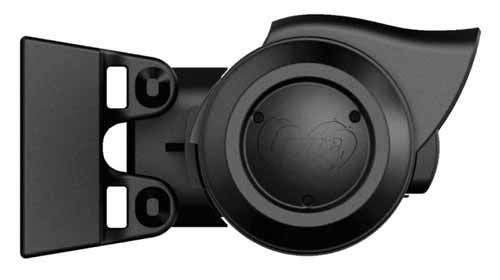
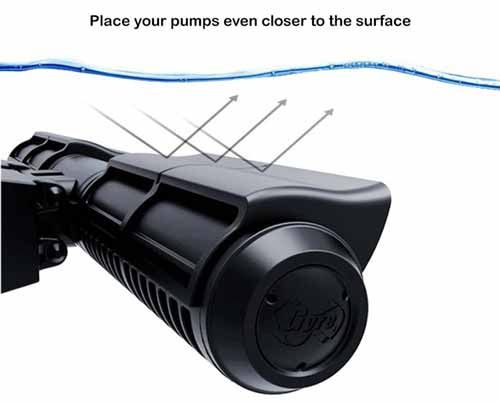

Water flow is important for your aquarium. Your return pump will create some flow but often it’s not enough. An additional pump called a powerhead is usually added to improve water flow. The Maxspect Gyre is unique among powerheads. It is unusually compact as well as powerful. Powerheads in your tank distract from the beauty of the inhabitants. An unobtrusive yet powerful powerhead like the Gyre makes it very desirable.
The Golden Ratio and Rule of Thirds
Finally, anyone interested in aquascaping should always keep The Golden Ratio in the back of their heads as they design their tank’s environment.
The golden ratio is actually based on a mathematical equation designed to make something more natural and pleasing to the eye.
Don’t let the math scare you though! The philosophy of The Golden Ratio is much easier to understand than you might think.
The Golden Ratio is usually paired with another photography trick you may have heard of, the rule of thirds. The rule of thirds by itself simply means dividing the image into thirds using two horizontal and two vertical lines.
When the focus of your image aligns with the intersections of these lines it makes for a more natural image.
Combining these two philosophies for image design can help to really make for a more natural and aesthetically pleasing fish tank environment.
Reef Aquascapes - Less is more
You do not need to fill your entire tank with various rocks and corals to make it visually stimulating.
If you are keeping the general rules stated above in mind there should be few issues moving forward. The common rule of thumb is to keep it around 1-1.5 pounds of rock per gallon of water.
However, you should be aware of how much space you are allocating for just rock real estate. Try to keep one-third of the bottom of your tank free of rock and keep the walls of the tank free from obstruction, this includes both natural and manmade obstructions.
What you are trying to do by this is to highlight the spaces you are trying to display. It will make for a more visually impressive aquascape if you are aware of how you are using the empty spaces in your tank.
In general, do your best to keep the sand bed clean. The lack of debris on the sand bed helps to emphasize the rocks and coral structures that you so painstakingly designed and set up.
Don’t let your hard work go to waste and make sure to keep your tank both environmentally and aesthetically clean.
Aquascaping Conclusion
There is quite a bit to keep in mind when beginning your aquascaping journey. However, if you are methodical, levelheaded, and keep the above information on hand while you work, you should have no issues creating your own aquascape that matches that picture-perfect scene you have saved inside your head.
It might take a little bit of trial and error to get your scene just right but that is all a part of the process. The important thing is to enjoy the motions and get lost in the artistry of your own design.
Don’t forget if you would like more information or tips about how to best take care of your reef aquarium to feel free to look at the other articles available at Reef Tank Resource.
The best aquascapes are designed by those who take the time to learn how the different pieces form the functional ecosystems.
